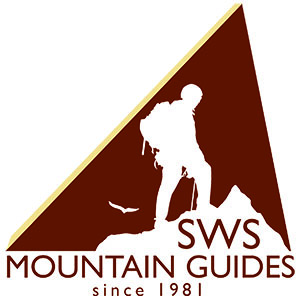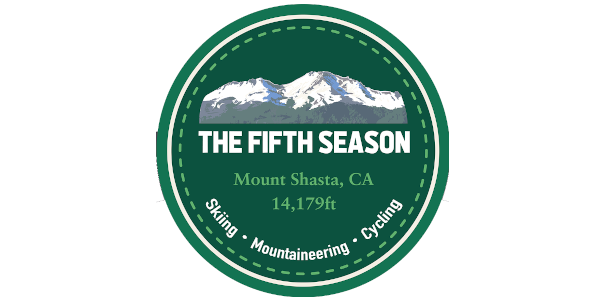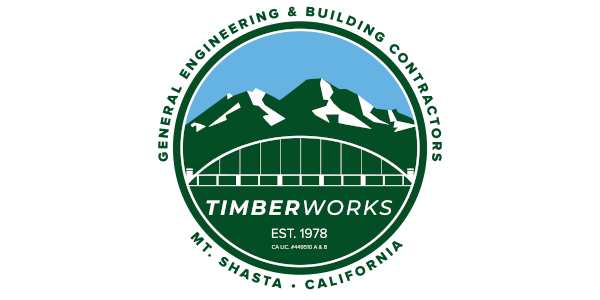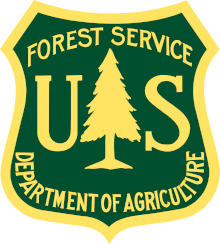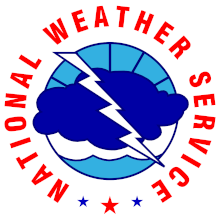Hello Mt. Shasta climbers and hikers! Congratulations because you've arrived at the BEST source of Mt Shasta climbing, avalanche and weather information on the internet!
Climbing conditions on the mountain should be looked at as a continuum. There is never a distinct cutoff between good and poor conditions. Beginning in April and until the following winter, it's a slow decline from good to poor climbing conditions with the variable factor of melting snow. The mountain and all routes are in their prime most every year in April and May which host good snow coverage, low rockfall, decent weather, low avalanche danger, longer days. June and July are transitional periods. August up until winter are usually poor. In short, as snow melts, rockfall increases and climbing on loose rock is not fun.
Keep in mind our information is based on a climbers perspective. One could look at a current photo of the mountain and think, "Looks good to me, there is still a thin strip of snow to climb up in Avalanche Gulch...". Then, one would/should look at our current route condition description and see that we have Avalanche Gulch listed as "poor" condition, causing confusion. The rangers form their descriptions and ratings of route conditions based on the season and its entirety, from the very best to the very worst. Considering that, we feel our descriptions are accurate. We certainly don't want to be ranger buzzkill and keep you from having a grand adventure on Mt Shasta. We DO want to inform you of the current conditions, as they are, and prevent accidents. Most search and/or rescue incidents boil down to a few common denominators and we strongly consider these factors in our judgement and information.
The skies have been very smokey lately and we are likely going to find Mt Shasta in and out of the smoke until we get some wetting rain to put all the fires out! Check the web cam for latest. All routes on the south and west aspects are in poor condition. Guided services have ceased trips on these routes. Most climbers are making the transition to later season trailheads: Clear Creek, Northgate and Brewer Creek. Many of the routes from these trailheads are in decent shape! Check our individual route descriptions and conditions links for details or give us a call.
The best late season route for novice and intermediate climbers is the Clear Creek route. Northeasterly facing routes out of the Brewer Creek TH are in decent shape and routes from the Northgate TH are in good shape still. The north side routes are recommended for experienced climbers. Avalanche Gulch has melted out considerably and not recommended until next year.
During the summer months, it is common see very warm temperatures and poor overnight re-freeze on the mountain. Warm temperatures are not condusive for good climbing conditions. The rangers have witnessed wet loose avalanches, increased rockfall and waist to chest deep post holing, all due to the warm weather. These are all more reasons why climbing becomes more dangerous as we move through the summer.
For those wanting to venture onto the glaciers: Glaciers are in great shape for climbing. This is also the time of year when some existing snow bridges are becoming thin and weak. Have proper glacier travel and rescue skills.
Please note that dogs are not allowed in the MS Wilderness. Thank You. The overall conditions and route descriptions will not change much more for the rest of the season. We will update the information less frequently because of this, FYI. The Mt Shasta Avalanche Center will begin advisories in December.
Check our weather tab for numerous resources on weather. While the weather at lower elevations around Mt Shasta area can be decent, it's often that we'll get a cloud cap on Mt Shasta itself. Afternoon lightening and thunderstorms are more of a possibility this time of year also. Never climb into a white out as many climbers have become lost or died in similar conditions. Many routes from all aspects of Mt Shasta converge on the upper mountain (>12,500 feet). During limited visibility conditions, climbers have descended the wrong side of the mountain... not good. Keep an eye to the sky as you climb, turning around if clouds begin to build on or near the mountain. Check the WEATHER FORECAST before coming up onto Mt Shasta! Late season storms are not uncommon and can host winter like conditions.
Ice fall and rock fall are possible year round. It's a simple equation: as snow melts, rockfall increases. Further, if rime ice is seen plastered to exposed rocks above, it will eventually flake off and fall onto climbers at some point, guaranteed. This is more of a problem earlier in the year. Wear a helmet and keep your eyes up slope as you climb. Pay attention to other climbers: rockfall is often caused from climbers resting in melted out areas and accidentally dislodging rocks onto slopes/climbers below.
At a height of 14,179 feet Mount Shasta is a high altitude peak, and it is common for climbers to experience acute mountain sickness (AMS) with signs and symptoms of nausea, headache, and lightheadedness. Despite being a common condition, AMS should not be taken lightly. It can quickly develop into the much more serious, and potentially deadly pulmonary or cerebral edema. Stop, take a break. If symptoms do not improve, your only choice is to descend, descend, descend! SELF RESCUE IS HIGHLY RECOMMENDED should one become injured or sick.
The bottom line: BE PREPARED for full mountain conditions at any time. Do your research! ALWAYS WEAR A HELMET and KNOW HOW TO USE YOUR ICE AXE & CRAMPONS! Our goal is to ensure you have a positive wilderness experience and come home in one piece! Remember, YOU ARE RESPONSIBLE FOR YOUR OWN SAFETY.
YOU WILL NEED THE FOLLOWING MANDATORY ITEMS TO CLIMB MT SHASTA: **Wilderness Permit, Summit Pass, Human Waste Pack-out bags.
Wilderness Permits, Summit Passes, and Pack-out Bags are currently available at all trailheads and the Mt Shasta and McCloud Ranger Stations for self issue. Annual passes are only available at the ranger stations and at The Fifth Season in Mt Shasta. The Mt Shasta Ranger Station is open Monday through Saturday from 8 to 4:30pm. The McCloud station is open 8-4:30, Monday through Friday. Check our 'climbing regulations' section for more details.
HORSE CAMP: The bathrooms are OPEN at Horse Camp and the spring water is running and available. For all other areas on the mountain one must melt snow for water, so bring extra fuel. The Horse Camp cabin and the surrounding property are owned and managed by the Sierra Club Foundation. The cabin is open year round and all are welcome, however one cannot sleep inside the cabin except in emergencies. Make sure you close the door when you leave. If you plan on camping at Horse Camp, please make sure to pitch your tent on either an existing tent site or on snow. Please DO NOT camp anywhere snow has melted, near tree wells, or where a tent site is not obvious. There is a caretaker on duty currently. A nominal $3 bivy/$5 tent fee is asked if camping at Horse Camp. Lastly, the Sierra Club Foundation manages their property under the Mt Shasta Wilderness rules - that means dogs are not allowed on their property either. Please respect the rules... Thanks!
TIPS and NOTES: Climb early and descend early. This limits exposure to inclement weather (afternoon buildup of clouds is common), allows plenty of time to descend before dark, and also allows a rescue effort to ensue before dark in the event one gets injured or lost.
Avalanche training along with a transeiver, shovel and probe are recommended in winter and spring.
Get an alpine start (2-5am) and have a turn around time of 12 to 1pm. Proper equipment, clothing and training are a must. Helmets are recommended always and expect rock and ice fall at all times.
Mt Shasta is a 14,000 foot lightening rod and is frequently hit by lightning (usually in summer and fall months), so don't push your luck with building thunderheads.
Do not expect to be rescued. Rather, prevent rescues from happening in the first place, and be prepared to handle rescues within your own climbing party should something happen. Nature sets its own terms and YOU must judge how much risk you are willing to accept. Extra warm gear (like a down jacket, balaclava and extra gloves) are a good idea in winter, spring and fall as climbers often develop superficial frost bite during strong winds. The wind chill temperature near the summit in winter and spring can be well below zero. Achor your tent well wherever you camp. Tents can and do blow away frequently. Do not plan to camp above treeline if you do not have anchor lines for your tent.
The best time to climb Mt Shasta is generally from late May to mid July on the south and west sides of the mountain when summer days are longer and the weather is generally stable. However in dry years, the thin snow pack creates the best climbing conditions in April, May and early June. When the snow melts, you are left with 7,000 feet of scree, talus and boulders. In heavy snow years the climbing season extends to August or September. There is NO trail to the summit. Climbing is much more safe and fun on consolidated snow. The routes on the north and east sides are not recommended for un-guided novices; glacier travel and route finding skills are prerequisites. Spring and summer can bring the chance of thunderstorms. The TEN essentials keep you and your party out of search and rescue statistics by using common sense and carrying the following: map, compass, sunglasses and sunscreen, extra food and water, extra clothing, head lamp/flashlight, first aid kit, matches/lighter, stove, knife/multi-tool and a bivy sack. If you choose to climb: Solo climbing is not recommended. Traveling with an experienced groupd is a good idea, and remember - do not split up the group! Wear a helmet, know how to use your equipment and use common sense and carry the ten essentials. The mountain has extreme weather changes. Be prepared, pay attention!
A note on wind... Mount Shasta stands by itself in the atmosphere. There is nothing anywhere near its height for over a hundred miles. Because of that, Mt Shasta creates a lot of unique wind conditions. Especially during the winter, spring and early summer, the snow covered mountain provides very little friction for accelerating winds bending around and over this topographic anomaly. Winds over 100 mph at tree line (8,000 ft) are common. It's anyone's guess what the winds at 14,000 feet could be when instruments measure 150 mph wind speeds at lower elevations on the mountain. Winds of 40 mph can knock you off balance. Winds of 60-70 mph can force you to crawl (and cry!). Hurricane strength winds (>74 mph) can make it nearly impossible to stand and destroy well anchored tents. The strongest winds occur with big pressure and temperature gradients in the atmosphere and tend to occur in front of, and behind storms. The lowest winds occur when the center of a high pressure is over the Mt Shasta area. Take this seriously as wind has resulted in searches, injuries and fatalities.
Reminder: DOGS ARE NOT ALLOWED IN THE MT. SHASTA WILDERNESS
THANK YOU and see you on the mountain!
The Mt Shasta Climbing Rangers
Nick, Jon, Forrest, and Matt














